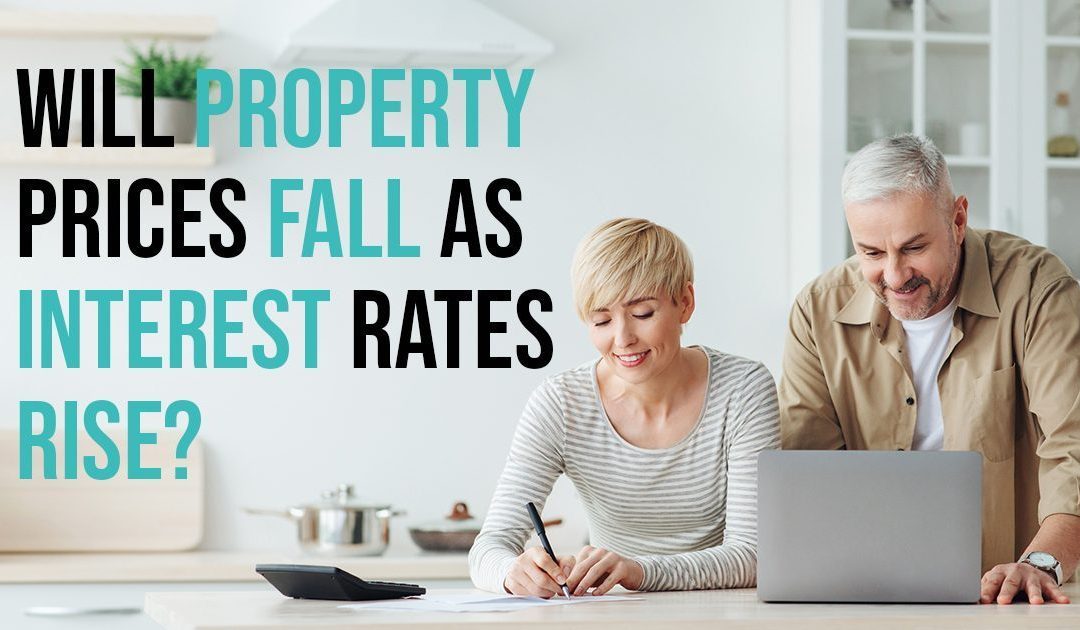Great Question!
Most lenders are increasing their home loan interest rates. With the expectation this will continue for the next 18 months to two years, some clients are worried that rising interest rates will cause property values to
plummet. Obviously when interest rates rise, larger mortgage repayments make it more costly to hold a property. Some assumptions are:
- there will be less people who can afford to buy a house
- there will be more properties on the market as investors and homeowners who have overextended themselves try to sell up, and
- higher rates could therefore cause house prices to fall for an extended period.
Interestingly however, history shows a very different picture. As sophisticated property holders and investors, we should always check the facts before jumping to conclusions. Let’s have a look at the correlation of median property prices and home loan interest rates over the past 30 years.

Most of us have heard of the incredibly high interest rates in the 1980s. Some property owners (probably your parents) were paying up to 17% interest! Can you imagine that? Yes, the median house price as seen in this chart was only about $150,000, however the average income (per person) was only $26,436.80. What I find most interesting is when you follow the chart above, despite a few bumps along the way, property prices have continued to rise regardless of interest rates rising or falling. So looking closely at this chart, you can see that interest rates over the past 30 years have not resulted in a fall in the median house price for a significant length of time. What the historical facts suggest is that sometimes when interest rates fall, the median house price may rise – but it doesn’t always happen this way.
There’s even less historical evidence to suggest that a rise in interest rates will necessitate a fall in house prices. In fact, the real data shows this to be the exception rather than the rule! There are plenty of examples over the last 30 years where Australian housing prices have actually risen at the same time that interest rates were rising (see 2000 -2008). Property researchers have many contradictory opinions about a flattening or drop in property prices, but we all know if we can hold on through this period, a good property will always come out on top again. That’s fine you might say, but a 2% increase on a $1,000,000 mortgage is significant. And yes, we agree. The following table shows your monthly mortgage repayments with a 1% and 2% increase. How much could mortgage repayments rise for a new owner occupier borrower?

So for those with a larger mortgage, we recommend planning for future rate rises NOW so it can be managed later on. For those wise enough to have fixed their loans last year or earlier, we also recommend starting to plan for the repayment shock you will experience when you come off your fixed loan. With the prospect of continuing rate rises, many clients are turning to us wanting to know if NOW is the right time to fix their home loan or investment property rate. Traditionally the fixed interest rate market sits at about 15% of all home loans. However, for nearly half of home loans settled mid last year, according to the ABS the number of fixed interest rate loans peaked in July 2021 at 46%. So, if you didn’t fix last year, unfortunately you have missed the boat on low fixed interest rates.
However, variable rates are now typically lower than fixed rates. We have direct access to dozens of lenders who still have competitive and very low variable rates. So, don’t be shy in asking us what we could achieve for you. In commentary last month from Tim lawless, Core Logic’s research director, he said the central bank was not yet worried about the ability of most mortgage holders to absorb the repayment pain and cited “with the median household well ahead on their mortgage repayments, the risk of falling behind is reduced.” That’s fine to say for the next few increases, however we are all very aware that we have been sitting in a low interest rate Disneyland for over a decade and the joy ride was always going to come to an end. Historically interest rates have sat comfortably in the 5-7% range and our crystal ball has not yet cleared on how high rates may rise in the next few years. So buckle up guys, we’re in for a roller coaster ride in the next few years.
Let’s finish with this thought… There are always opportunities in times of change – we just have to act on them…We should always be wary of treating the Australian property market as if it is just one single market where all areas perform the same. It is not! The Australian housing market has over 15,000 individual suburbs, each having its unique market and own set of individual dynamics. Whether interest rates go up, down or sideways, there will always be suburbs where prices are going up, down or sideways independent of what is happening with interest rates. There are many elements contributing to why property prices move in any direction. What is important is not so much where interest rates are heading, but what is going on in the suburbs where we own property or plan to invest and how we can ensure those individual suburb trends work in our favour rather than against us. Let’s talk soon.

